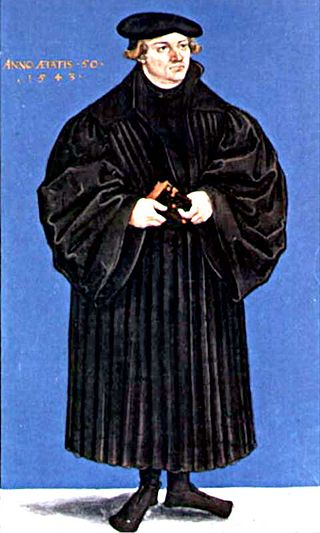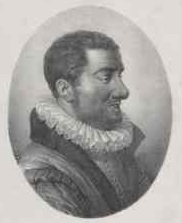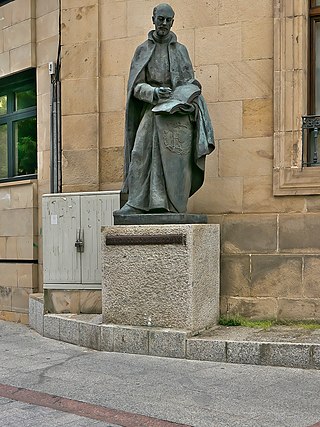Related Research Articles

Erasmus Reinhold was a German astronomer and mathematician, considered to be the most influential astronomical pedagogue of his generation. He was born and died in Saalfeld, Saxony.

Year 1511 (MDXI) was a common year starting on Wednesday of the Julian calendar.

Year 1467 (MCDLXVII) was a common year starting on Thursday of the Julian calendar.

Earl of Devon was created several times in the English peerage, and was possessed first by the de Redvers family, and later by the Courtenay family. It is not to be confused with the title of Earl of Devonshire, held, together with the title Duke of Devonshire, by the Cavendish family of Chatsworth House, Derbyshire, although the letters patent for the creation of the latter peerages used the same Latin words, Comes Devon(iae). It was a re-invention, if not an actual continuation, of the pre-Conquest office of Ealdorman of Devon.
Erasmus (1466–1536) was a Dutch humanist scholar.

Biéville-Beuville is a commune in the Calvados department in the Normandy region in northwestern France. The hyphenated name originates from the former communes of Biéville-sur-Orne and Beuville, which were united in 1972.

Justus Jonas, the Elder, or simply Justus Jonas, was a German Lutheran theologian and reformer. He was a Jurist, Professor and Hymn writer. He is best known for his translations of the writings of Martin Luther and Philipp Melanchthon. He accompanied Martin Luther in his final moments.

Jean Passerat was a 16th-century French political satirist and poet.

Luis de Velasco y Ruiz de Alarcón was the second viceroy of New Spain during the Spanish colonization of the Americas in the mid-sixteenth century.

Francisco López de Gómara was a Spanish historian who worked in Seville, particularly noted for his works in which he described the early 16th century expedition undertaken by Hernán Cortés in the Spanish conquest of the New World. Although Gómara himself did not accompany Cortés, and had in fact never been to the Americas, he had firsthand access to Cortés and others of the returning conquistadores as the sources of his account. However other contemporaries, among them most notably Bernal Díaz del Castillo, criticised his work as being full of inaccuracies, and one which unjustifiably sanitised the events and aggrandised Cortés' role. As such, the reliability of his works may be called into question; yet they remain a valuable and oft-cited record of these events.

Johannes Cuspinianus, born Johan Spießhaymer, was a German-Austrian humanist, scientist, diplomat, and historian. Born in Spießheim near Schweinfurt in Franconia, of which Cuspinianus is a Latinization, he studied in Leipzig and Würzburg. He went to Vienna in 1492 and became a professor of medicine at the University of Vienna. He became Rector of the university in 1500 and also served as Royal Superintendent until his death.

Charles de Bovelles was a French mathematician and philosopher, and canon of Noyon. His Géométrie en françoys (1511) was the first scientific work to be printed in French.
Villanueva de Sigena or Villanueva de Sijena is a town in the county of Los Monegros, in the northern province of Huesca, in Aragon (Spain). Located near the Alcanadre river, the local economy is primarily agricultural-based.

Bovelles is a commune in the Somme department in Hauts-de-France in northern France.
The year 1547 in science and technology included a number of events, some of which are listed here.

Margrave Ernest I of Baden-Durlach was the founder of the so-called "Ernestine" line of the House of Baden, the line from which the later Grand Dukes descended. He was the ruling Margrave of Baden-Pforzheim from 1533 and resided in Pforzheim from 1537. In 1565, his son Charles II moved the capital to Durlach and thereby changed the name of his country to Baden-Durlach. He had to deal with the upcoming Reformation and the frequent Ottoman wars in Europe. In this turbulent time, he tried to maintain a neutral position between the Protestants and Catholics. He did not participate in the Schmalkaldic War.
The year 1553 CE in science and technology included a number of events, some of which are listed here.
References
- ↑ Victor, Joseph M. (1978). Charles de Bovelles, 1479-1553: an Intellectual Biography. Genève: Droz.